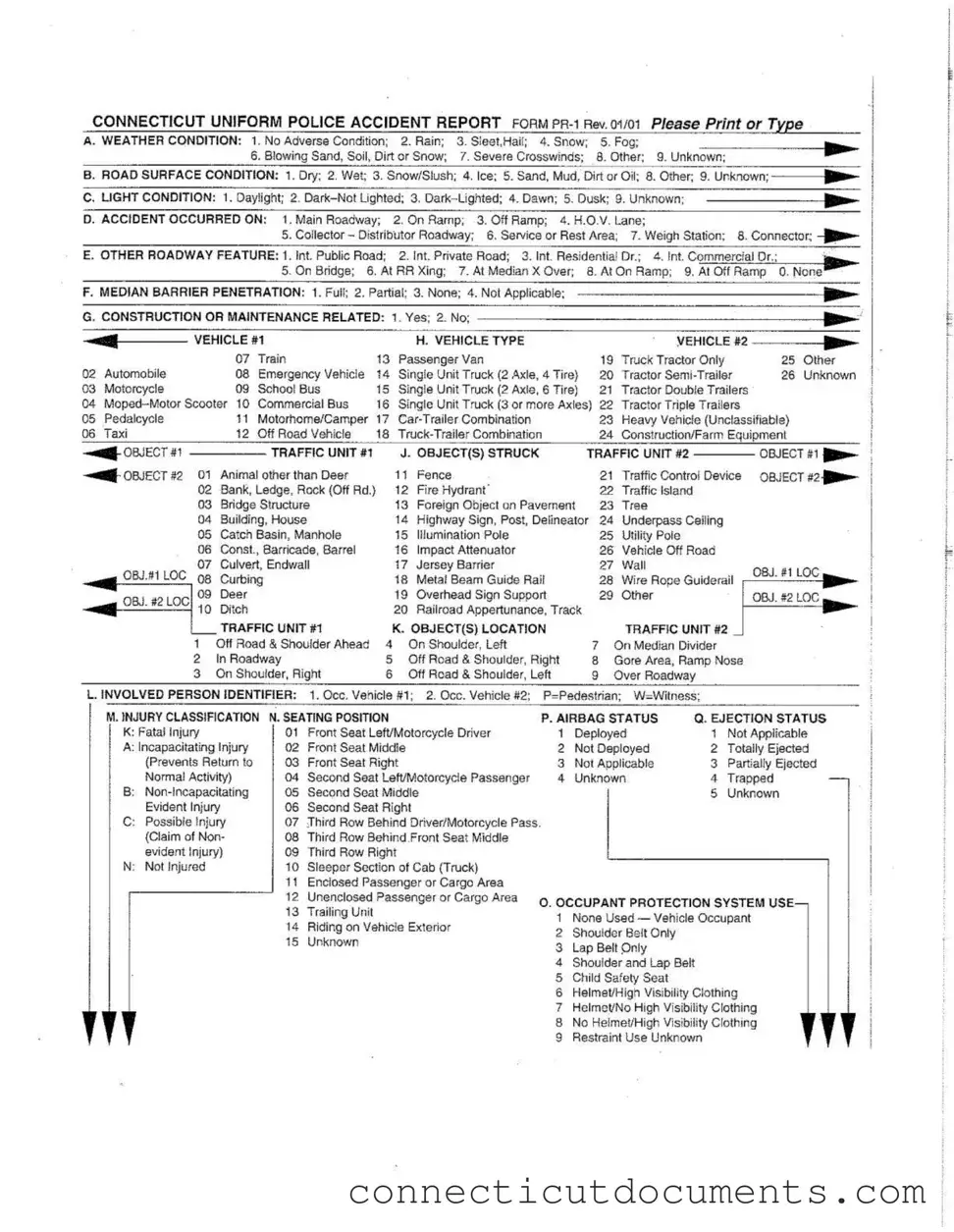The Connecticut Uniform Police Accident Report form, commonly referred to as the PR-1, serves as a crucial tool for documenting vehicle accidents within the state. This standardized form collects essential information that helps law enforcement, insurance companies, and other stakeholders understand the circumstances surrounding an accident. The form covers a variety of aspects, including weather conditions at the time of the incident, road surface conditions, and light conditions. It also identifies the location of the accident, whether it occurred on a main roadway, an on-ramp, or other specific areas. Additionally, the form addresses the involvement of vehicles, detailing types such as passenger vans, motorcycles, and commercial trucks. Notably, it includes sections for documenting any objects struck during the accident and the classification of injuries sustained by individuals involved. The PR-1 also captures critical data on occupant protection systems used, such as seat belts and child safety seats, as well as the status of airbags. By providing a comprehensive overview of these factors, the form plays an integral role in accident investigations and helps to ensure that all relevant details are accurately recorded.
